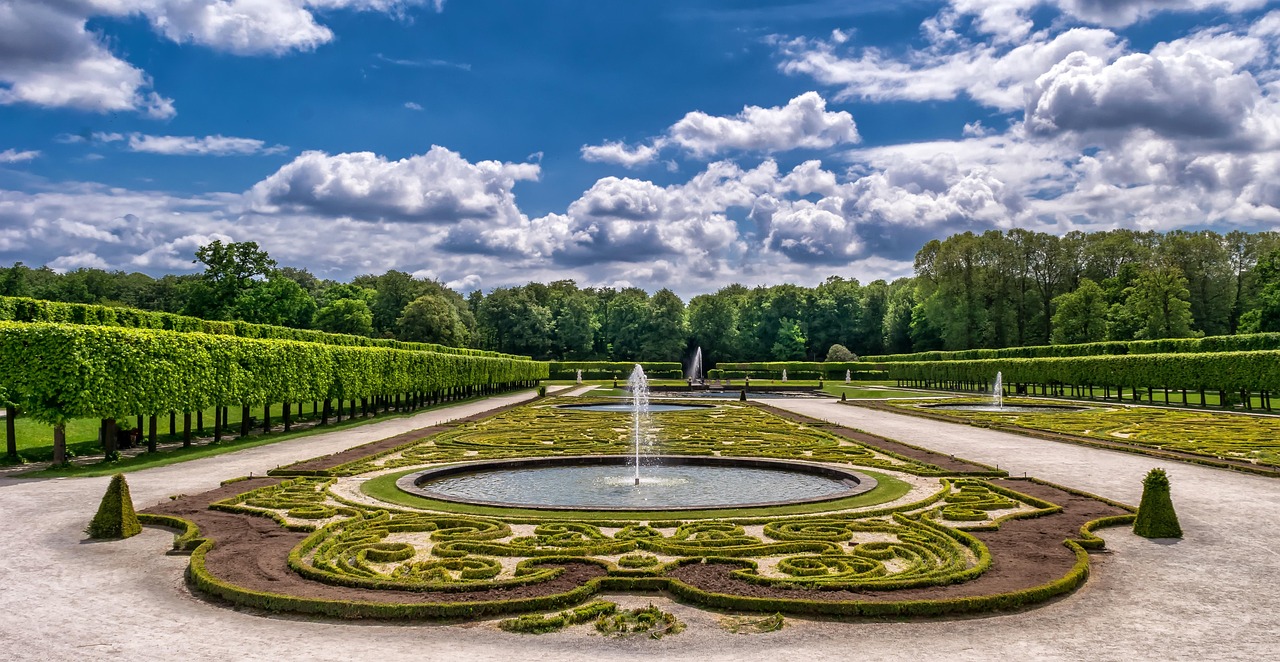Introduction
Throughout history, gardens have symbolized peace, harmony, and the human desire to connect with nature. From meticulously designed landscapes to wild and enchanting sanctuaries, gardens reflect culture, artistry, and history. Across the globe, there are countless breathtaking gardens, but only a few stand out as true masterpieces.
In this article, we’ll explore the 10 most beautiful gardens in the world, each offering a unique experience for travelers and nature lovers alike. Whether you’re fascinated by Japan’s Zen-style gardens, the grandeur of French formal landscapes, or the floral wonders of Europe, this list will take you on a journey across continents.
1. Keukenhof Gardens (Lisse, Netherlands)
Known as the “Garden of Europe”, Keukenhof is one of the largest and most famous flower gardens in the world. Spanning over 79 acres, it is home to more than 7 million bulbs, including tulips, hyacinths, and daffodils.
- Best Time to Visit: Mid-March to mid-May during the tulip season.
- Highlights: Colorful tulip displays, themed floral shows, and iconic Dutch windmills.
- Why It’s Famous: Keukenhof is the ultimate symbol of the Netherlands’ floral heritage.
2. Gardens of Versailles (Versailles, France)
The Gardens of Versailles are a stunning example of French landscape design. Created by André Le Nôtre in the 17th century, they cover 800 hectares of formal lawns, sculptures, fountains, and tree-lined paths.
- Best Time to Visit: Spring and summer when fountains are active.
- Highlights: The Grand Canal, the Orangery, and the Fountain Shows.
- Why It’s Famous: A UNESCO World Heritage site that epitomizes royal luxury and artistry.
3. Butchart Gardens (British Columbia, Canada)
The Butchart Gardens are one of Canada’s top attractions, drawing over a million visitors annually. What was once a limestone quarry has transformed into a 55-acre floral paradise.
- Best Time to Visit: Spring for blossoms, summer for roses, and December for the magical Christmas lights.
- Highlights: The Sunken Garden, Rose Garden, and Japanese Garden.
- Why It’s Famous: A stunning example of garden restoration and creativity.
4. Kenroku-en Garden (Kanazawa, Japan)
One of Japan’s Three Great Gardens, Kenroku-en perfectly embodies the six essential qualities of a Japanese landscape garden: spaciousness, seclusion, artifice, antiquity, watercourses, and panoramas.
- Best Time to Visit: Winter for snow-covered pines, spring for cherry blossoms, and autumn for fiery maple leaves.
- Highlights: Stone lanterns, tea houses, and tranquil ponds.
- Why It’s Famous: A timeless reflection of Japanese culture and aesthetics.
5. Dubai Miracle Garden (Dubai, UAE)
In the heart of the desert lies the world’s largest natural flower garden, the Dubai Miracle Garden. Spanning 72,000 square meters, it features more than 150 million flowers arranged in extraordinary shapes and designs.
- Best Time to Visit: November to March when the garden is open.
- Highlights: Floral castles, heart-shaped archways, and the life-size Emirates A380 airplane covered in flowers.
- Why It’s Famous: An awe-inspiring blend of creativity and horticulture in a desert environment.
6. Nong Nooch Tropical Garden (Pattaya, Thailand)
The Nong Nooch Tropical Botanical Garden is a sprawling 500-acre paradise showcasing Thai architecture, cultural shows, and exotic plant collections.
- Best Time to Visit: Year-round, thanks to Thailand’s tropical climate.
- Highlights: French Garden, Orchid Nursery, and cultural performances.
- Why It’s Famous: A blend of traditional Thai culture and horticultural brilliance.
7. Villa d’Este Gardens (Tivoli, Italy)
A masterpiece of Renaissance garden design, the Villa d’Este Gardens are famous for their spectacular fountains and waterworks. Constructed in the 16th century, they remain one of Italy’s greatest treasures.
- Best Time to Visit: Spring and summer for the full effect of the fountains.
- Highlights: The Hundred Fountains, Neptune Fountain, and lush terraced landscapes.
- Why It’s Famous: UNESCO-listed site showcasing Renaissance artistry.
8. Singapore Botanic Gardens (Singapore)
Founded in 1859, the Singapore Botanic Gardens are a UNESCO World Heritage site and a living laboratory of tropical flora. Spanning 82 hectares, it is one of the most visited gardens in Asia.
- Best Time to Visit: Year-round due to Singapore’s consistent climate.
- Highlights: National Orchid Garden, Swan Lake, and rainforest trails.
- Why It’s Famous: A tropical paradise that blends research, conservation, and leisure.
9. Kew Gardens (London, United Kingdom)
The Royal Botanic Gardens at Kew are among the world’s most renowned botanical institutions. Established in 1759, Kew is home to the largest collection of living plants globally.
- Best Time to Visit: Spring for cherry blossoms, summer for roses, and winter for light shows.
- Highlights: Palm House, Temperate House, and Treetop Walkway.
- Why It’s Famous: A UNESCO World Heritage site and global hub for plant research.
10. Rikugien Garden (Tokyo, Japan)
Built in the Edo period, Rikugien Garden is one of Tokyo’s most scenic strolling gardens. Designed around the six elements of Japanese poetry, it features picturesque landscapes meant to be enjoyed from multiple viewpoints.
- Best Time to Visit: Spring for azaleas and cherry blossoms, autumn for fiery foliage.
- Highlights: Tea houses, scenic bridges, and illuminated night strolls.
- Why It’s Famous: A poetic garden embodying traditional Japanese philosophy.
Conclusion
Gardens are more than just spaces filled with flowers and greenery—they are cultural landmarks, historical treasures, and living works of art. From the tulip-filled fields of the Netherlands to the tranquil Zen gardens of Japan, each of these destinations represents a unique perspective on humanity’s relationship with nature.
If you ever plan a trip around the world, don’t miss the chance to visit one—or all—of these 10 most beautiful gardens in the world. They will inspire you, calm your mind, and leave you with unforgettable memories.



